I live in a mountainous region of south-central British Columbia, the central Kootenay. Jasper Park and township are over 700 kilometres from me. Despite the distance, I am able to imagine the shock and horror of fire destroying … well, everything. I feel, though, that this kind of disaster is just going to keep getting more frequent.
There is not much that I can do from here to help the people of Jasper. I can only be thankful for the incredible heroism of the firefighters and the people who facilitate their work. And I can hope that rebuilding is as easy as possible given the circumstances, and that no such fire touches them in the near future.
Jasper fire
The July 2024 fire that struck Jasper Township this past week is still out of control as I write this, although the flames in the town itself appear to be largely extinguished.
25,000 people were evacuated before the fire engulfed the town, and I haven’t seen any reports of loss of human life. The reports are still incomplete, but it appears that about a third of the structures in the town were completely destroyed. It will be weeks before evacuees are allowed back.
I look at the pictures and try to imagine myself as a resident of Jasper doing the same. It is truly heart-breaking. The thought of losing a home and all the things that entails is almost completely overwhelming.
Just thinking as myself, though, I am deeply saddened by the loss of a natural jewel. The town of Jasper has always been intentionally constrained to preserve the area it resides in. It serves the park to a greater extent than the other way around. This is as it should be: a national park is intended to preserve natural beauty and life for all mankind.
I remember numerous trips to the Jasper area from years past. Driving through it or camping in one of the parks: a tent in the wilderness for a night or two’s escape from the urban landscape. All those beautiful trees are gone now, and tens of thousands of animals are dead, severely injured, or homeless. Nature will in time recover, but humanity has pushed so much of it to the brink of permanent destruction that losing even a small part of it makes my heart ache.
Some specifics
- the two fires surrounding the town grew from about 6,700 hectares to over 36,000 hectares between July 22 and July 25
- over 25,000 people were evacuated after evacuation orders were issued on July 22
- the Township was completely engulfed as of July 24th
- crown flames in excess of 100 metres were observed with the fire itself progressing as fast as 15 metres per minute at peak
- preliminary inspection of the site as of July 26 identified over 350 of 1,100+ structures were destroyed. This includes a number of well-known buildings such as the Maligne Lodge
News reports
- ‘Monster’ fires may have destroyed half of historic Canadian town (BBC)
- Buildings in Jasper in ashes as ‘monster’ wildfire spans 36,000 hectares (CBC)
- Jasper wildfire live updates: Premier, PM discuss fire battle | Critical infrastructure still intact | JPL main lodge ‘standing’ (Edmonton Journal)
- Rains help firefighters battle blazes in Canada’s Jasper National Park (Aljazeera)
Pictures
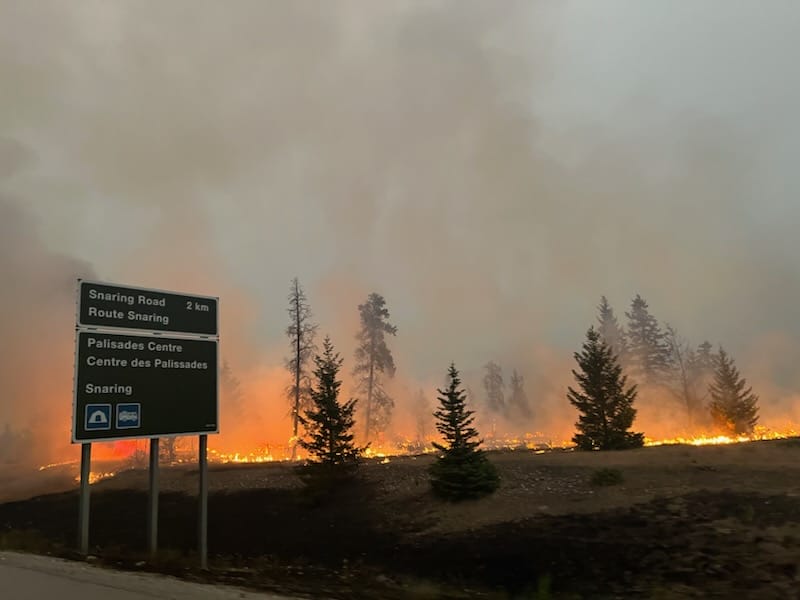

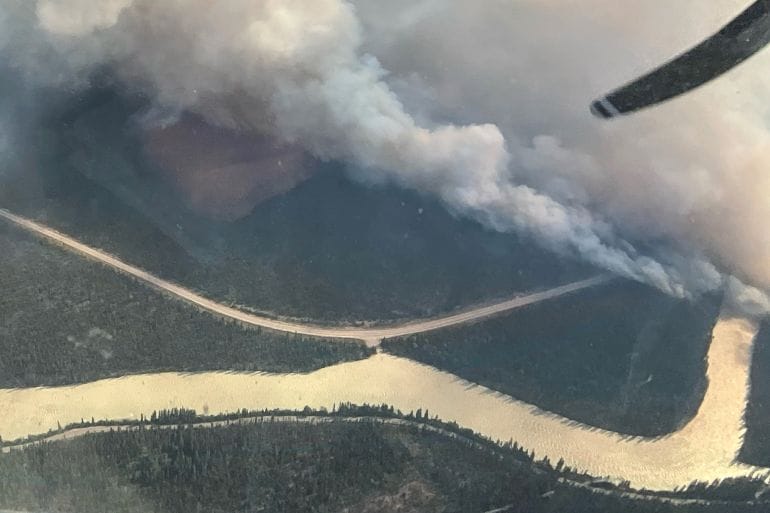
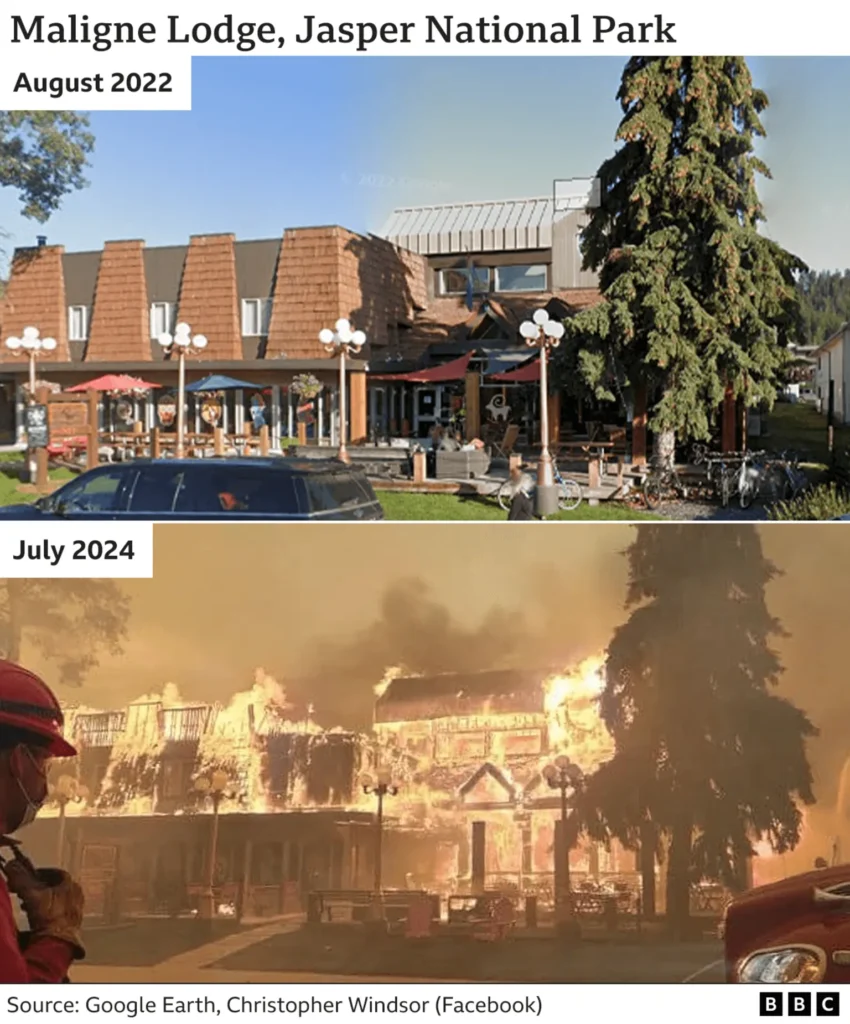
Local Kootenay region fires
Irene and I experienced a ‘local’ fire situation the very first year we moved in to our home near Castlegar. We had to evacuate, gathering our animals and leaving our new home, unsure whether we would return to find it intact or not. Thankfully that fire was a small thing and left very little ‘human’ tragedy in its wake. But it left a clear mark in our minds, and every year since we have watched forest fire conditions with a personal interest.
The Jasper park fires are the biggest ‘local’ wild fire tragedy this year, but there are over 400 ‘notable’ fires burning in B.C. currently. Several of them are pretty close to where Irene and I live.
The most ‘impactful’ of the local wildfires is in the Slocan Valley about 90 km from us. The town of Silverton and much of the surrounding area has been evacuated and Highway 6 through that area has been closed for several days. There have also been a number of smaller / less disruptive fires around Nelson. And there have been a dozen or so rural areas under evacuation alert (i.e.: be ready to leave at any moment) due to dozens of small fires burning throughout the region.
The smoke situation at our house near Castlegar varies daily. Yesterday was clear but today we couldn’t see the nearby mountains due to the smoke when I woke up. The air outside is acrid and smells like standing in the smoke stream from a campfire.

The burning world
Forest fires are not really rare or even uncommon. In fact, it is really a part of a healthy natural forest renewal process for fires to rage now and then.
But something is different in recent years. The fires are larger, more intense, and more frequent. This can be traced fairly easy to the changes in climate in recent years. World record global high temperatures, week after week, have become the norm. Severe droughts are occurring in places that normally have regular rains. Places that are normally dry and hot are turning in to ovens.
I can look at all the studies and scientific analysis and see the obvious trends. But it is a different thing to actually live through the change. The place I live in the Kootenay region of the Canadian Rockies used to have a week or two of +30 temperatures each summer. Now a normal course of events is to have a month or more with daily high temperatures exceeding 35 degrees and periodically over 40 degrees.
A few record highs or an occasional hot summer are part of normal weather conditions. But decades where almost every summer is hotter and dryer than the previous year and winter snow buildup keeps shrinking, year after year after year- that’s climate change. That is where we are now.
The increased heat and reduced precipitation in much of Canada leads to a lot of follow-on conditions. Water shortages and rationing are standard procedure throughout parts of the world that always had ample supplies in the past. And dry-as-tinder forests leads to larger and more frequent forest fires.
Humans are going to have to adapt to these changes and many others. All of the best evidence and analysis puts the blame squarely on us: we pumped the air full of carbon dioxide and now we have to live with the mess.
I’d like to think that we can take action to prevent things from getting worse. But I look around at the ‘drill baby drill’ bumper stickers and ‘rolling coal’ trucks and despair.

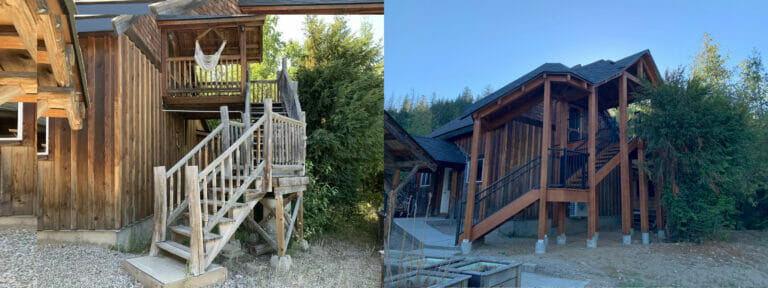
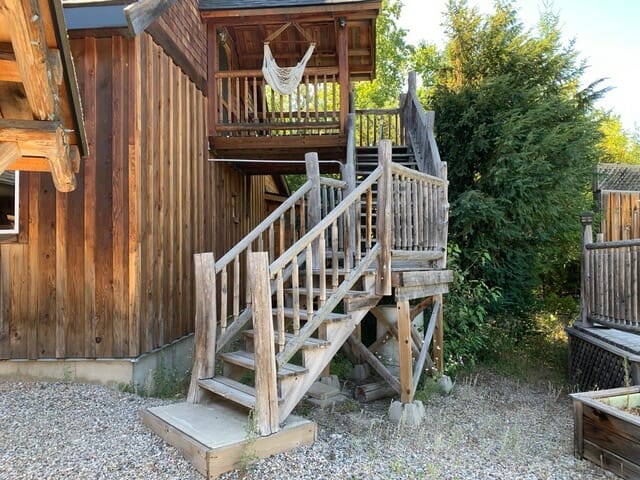

Pingback: Jasper: A personal glance | Ubergeek Kelly's World- Life, technology, science, rants